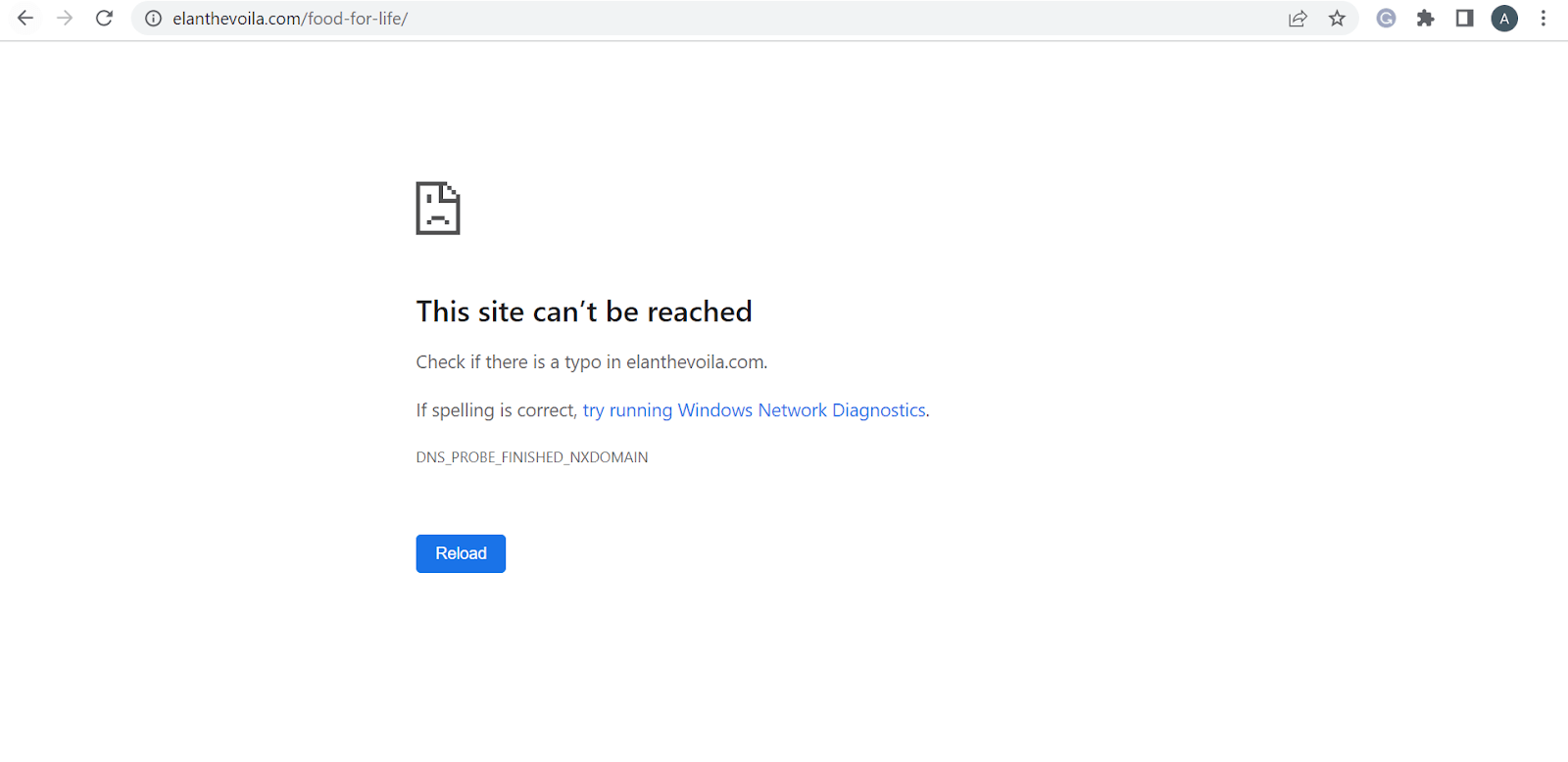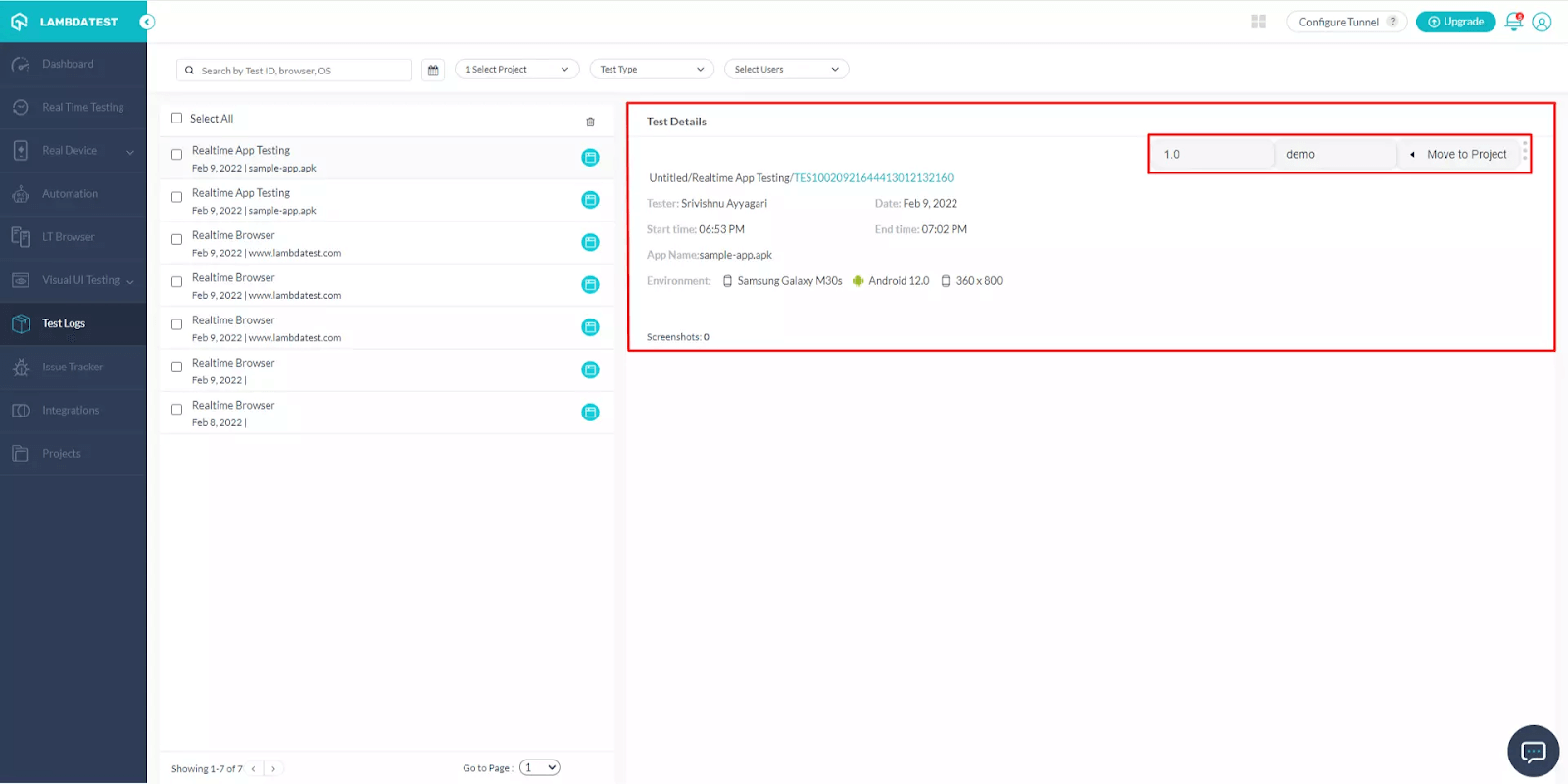Advanced Guide On How To Write A Bug Report
Arnab Roy Chowdhury
Posted On: May 30, 2022
![]() 269876 Views
269876 Views
![]() 9 Min Read
9 Min Read
A bug that is well described has the capability to reduce the time taken to replicate the defect and resolve it. However, the perfect bug description is a skill overlooked by many organizations.
Bugs can cause delays in the release of an application, and during the testing lifecycle or when the app is in production, developers tend to overlook bugs that are not properly described. This can spoil business relationships between an organization and its clients and may also lead to a company’s loss of reputation in the industry.
In this article on how to write a bug report, we will learn some of the tips and tricks to write a good bug report.
Let’s get started!
TABLE OF CONTENTS
Before understanding bug reporting, it’s important to recognize why bugs occur in the first place. Bugs arise due to various reasons, including human error during coding, ambiguous requirements, lack of proper testing, or unforeseen interactions between different parts of the system.
What is a bug report in software testing?
A bug report is a detailed document in the software testing process, outlining an identified bug to be fixed by developers. It includes crucial elements: Title/Bug ID, Environment, Steps to Reproduce, Expected and Actual Results, Visual Proof, Severity/Priority. Effective bug reports accelerate debugging, prevent production delays, and facilitate a faster resolution, ensuring a high-quality software release
A bug report can range anywhere from 2 pages to 20 pages and more. Using the right bug tracking tool can help you deliver the best bug reports on time when you explore how to write a bug report.
In this article, we will discuss how to write a bug report effectively, which can help developers to replicate and resolve the issue.
Let’s get a gist of how to write a good bug report. Our tips and tricks on writing effective bug reports can set your developers to take ROI-induced actions on your product.
Let’s explore the stages of a bug report before we get into how to write a bug report:
Stage 1: You have discovered the bug.
Stage 2: You send a mail to your developer and receive the reply, “Could you please explain further?”
Stage 3: You send a detailed report on what the bug is all about.
Stage 4: The developer takes the necessary action, and tada! The bug is gone forever!
In the above stages, stage 3 is quite important. When the developer asks about the bug, if you send messages like “The website doesn’t load” or “The left button in the side panel of the homepage doesn’t work”, your developer would get muddled. Little information is equal to no information in bug fixing.
Get a detailed information about the bug. Try LambdaTest Now!
Watch this video to know more about test result analysis and reporting in Selenium 4. Also, learn about different selenium reporting tools based on ease of setup, pricing, supported report formats, and more.
How to write a good bug report
Here is the process on how to write a bug report:
- Issue ID
- Heading
- Summary
- Screenshots/ Images/ Video recordings
- Expected results vs. actual results
- Step-by-step procedure to find the bug
- Environment
- Console logs
- URL of the Source
- Priority and severity
- Additional info
Issue ID: Maintain a clear issue ID. You can auto-generate issue IDs with a bug tracking tool. This will also help you avoid duplication.
Heading: Your heading catches the attention of your developer first. Make it short, clear, and crisp with the needed info on category, pages, or location. Take a look at this section on how to write a good bug report example:
Example: “Homepage: The new blog link doesn’t work”
Summary: Elaborate on your bug report heading with the necessary points on how and when the bug has been found. A good report summary can come in handy when your developer wants to locate the bug in the bug inventory in the future.
Example: “We have published the social media posts at 10.15 AM on our recent blog titled “Food for life”. But when I clicked on the blog link, nothing happened. I tried to visit the page manually, but it shows ‘The site can’t be reached”
Screenshots/Images/Video recordings: It’s always better to go visual since visualization can yield better results. Yes, visual testing is of great importance. A video recording, image, or screenshot can soon help your developer locate the bug. They would surely be able to know how exactly the bug has impacted and what they need to do next.

Expected results vs Actual results: Now, convey what you expected would appear on the screen and what appeared to your developer. This will help any developer to get a clear picture of what’s expected and what’s not. This is where a test case comes into play. The actual difference between a test case and a bug report is that the test case differentiates between the expected result and the actual result. On the other hand, a bug report speaks about the number of errors and how to fix them.
Example:
Expected result: The blog link would take the user to the webpage.
Actual result: The blog link doesn’t take the user to the webpage.
Bridge the gap between expected result and the actual result. Try LambdaTest Now!
Step-by-step procedure to find the bug: Assume that your developer is a noob who doesn’t know how and when you found the bug. How would you explain it to them? First, illustrate it in the report.
Example:
- Go to the homepage.
- Click on the resources page.
- Click on the blog.
- Click on this blog link: https://www.elanthevoila.com/blog/food-for-life/
Environment: Include the vital info such as browser, OS version, size of the screen, pixel ratio, and level of zooming in the test environment. This will allow the developer to get an idea on which platform or gadget the error appears to be zoomed.
Example:
- Browser: Firefox 100
- Screen size: 1920×1080
- OS: Windows Server 2022
- Viewport Size: 360 x 800
- Zoom level: 100%
- Pixel ratio: @3x
Console logs: Console logs are the area where a developer can witness what errors have been identified on the webpage from a technical point of view. This is the best choice to identify where it all went wrong after you get an idea on how to write a bug report.

URL of the Source: Your developer needs to know the exact location of where the bug was found. This will help them take action within minutes.
Example: “https://www.elanthevoila.com/blog/food-for-life/”
Priority and severity: Give a clear picture of how severe the bug is. Prioritize it accordingly. The bug severity can range anywhere between
- Major
- Critical
- Trivial
- Enhancement
- Minor
The severity can range anywhere between high, medium, or low.
Additional info: It’s always good to align the document professionally. Ensure that you provide a few extra pieces of info too. For example, give information on your name, due date, assigned developer, and conversation with the user or customer needed to fast-track the debugging process.
Example:
Name: Swapnil Biswas
Due date: 02/08/2023
Assigned developer: Brandon Stark
Want to make the life of testers easy and fuss-free while debugging? Try LT Debug Chrome extension!
Let’s explore the nuances of that most divine bug report developers love to worship. These hacks can save your day and let you share the most needed feedback. You can use some of the most popular bug tracking tools like Jira, Asana, Trello, etc. to make bug tracking much easier and effortless.
Most of such bug tracking tools can easily be integrated with popular cloud-based testing platforms like LambdaTest. Cross browser testing tools like LambdaTest supports integrations with the top project management tool, thus enabling you to create issues directly from the LambdaTest platform itself.
LambdaTest allows you to perform cross browser testing of your websites and web apps over an online browser farm of over 3000 browsers and operating systems. You can learn more about the integrations from the LambdaTest Integrations page.
Tips and Tricks to remember
Be it writing a bug report after online browser testing or Selenium testing, these tips and tricks can be of utmost help to anyone who is learning how to write a bug report:
Check if it is really a bug
Often, testers fail to test a critical functionality because of environmental issues or user errors and log it as a bug. This leads to a waste of time for both the developer and the tester. Before they learn how to write a bug report, the tester should:
- Reproduce the issue again in different environments.
- Make sure there is no environmental issue.
- Check with the requirement specifications and make sure whether the functionality is failing or is it supposed to behave the way it is currently doing.
Once you have made sure that all these criteria have been fulfilled, you can go ahead to file a bug report. This is an important step when you want to learn how to write a bug report.
Be specific in the overview
When you ask the question, “How to write a good bug report?” The first answer would be to contain
- A precise summary section to make the bug report unique and easily identifiable.
- A brief overview that gives a developer a clear understanding of the issue.
Often, the summary itself gives the developer an idea of what the bug is. For example, “Button is not working in iPhone X”. By looking at the summary, the developer understands that the issue is with a certain button on iPhone X.
A summary is also important to determine the lifecycle of a bug. A properly explained overview will give the developer an idea of the scenario where the error can be reproduced. While describing the overview after learning how to write a bug report, the tester must make sure to
- Provide relevant information on why the issue is a bug.
- Provide detailed information on how to reproduce it.
- Provide information on the business requirement.
The uniqueness of the bug
Testers often make the mistake of reporting the same bug multiple times. An enterprise-grade bug reporting tool should have indexing and a proper directory to find out bugs that have been reported. So, the next time a bug is easily detected, instead of reporting it, you must
- Go through the defect logs and find out if the same bug or a bug similar to it already has not been reported.
- Before reporting the bug, give it a unique bug id and make the title such that it can be found easily in the index.
- In bug reporting tools, there are criteria where the severity of the bug can be mentioned. The bug may be minor, major, critical, or in the worst case, a blocker. How soon the bug needs to be fixed depends on its category.
Steps to reproduce the bug
This is the most important part of “How to write a bug report?”. It helps the developer to replicate the issue in the development or production environment. This is the phase where the tester teaches the developer how to recreate the bug in their environment. While writing this section, instead of a brief summary, focus on:
- Step by step guide to observing the impacted functionality.
- Mention the environment and platform details and also the user type, whether the issue is happening for a specific user or all users.
- Don’t forget to attach screenshots. These act as solid evidence for your report and also helps the developer to compare the report with the scenario recreated on their system.
Learn how to mark bugs using real-time testing:
You can also follow the LambdaTest YouTube Channel to keep yourself updated with the latest videos on web testing, automated browser testing, and more.
Behavioral report
Before reporting a bug, the tester should describe how a functionality or part of an application is expected to behave. Sections from the requirement specification consisting of the business requirements can also be attached here so that the developer can understand how the application should work. This is known as expected behavior. For example, “On clicking the ‘Logout’ button, the user should log out from the application”.
The second section of the behavioral report contains the subject matter of the bug. This consists of how the functionality behaves and how much different it is from the expected behavior. While writing this section, terms like “not working”, and “defect” should be avoided. As you understand how to write a bug report, you should remember that a developer never likes someone else to tell them that their code is wrong.
Give specific details on how the functionality is not working as expected. This step is a must for any learner who is into understanding how to write a bug report. For example, “On clicking the ‘Logout’ button, the application closes, and an error report is displayed showing ‘session terminated”. For functionality testing, depending on an automation testing tool can help very well.
Follow up on the reports
A job of a successful manual or an automation tester is not only to report bugs but also to make sure that the bug has been fixed. After the report has been submitted, follow up with the developer and share that you are willing to help. Sharing a word of encouragement while following up on the report is a nice thing to do. A developer who feels encouraged about his work is more likely to fix a defect than a developer who gets annoyed by reading a poorly written bug report.
After focusing on the above-mentioned points, you will soon be able to write a high-quality bug report, be it for manual testing or automation testing. The bug reports should be focused on since they are an important mode of communication between a developer, a tester, and the management.
Furthermore, a great bug report that leads to the quick fixing of the defect will not only increase the quality assurance of the product but will also ensure that you have a good working relationship with the developers.
Bonus Tips and Tricks
These added tips and tricks can serve you well when you want to identify the pattern in how to write a bug report.
Report as soon as you locate the bug
When you find a bug as you test; you needn’t wait to write a complete bug report later. This will ensure that your bug report is on par with the industry standards. However, you might miss out on crucial aspects when you plan to write your bug later. Nowadays, automation testing can help you speed up the bug reporting process. This is crucial for anyone who wants to know how to write a good bug report.
Reproduce the bugs at least thrice before you report
Giving wrong information can test the patience of the calmest developers out there. Take due diligence to check thrice before you hit the send button on the bug report. Even if it’s not reproducible, make an effort to record the timing of the bug. This will add value to being cautious in the future. This is vital to know even before you figure out how to write a bug report.
Read the report carefully before sending
As they say, the pen is mightier than the sword. Check for any grammatical errors, spelling mistakes, punctuation errors, or unclear sentences before you send the report to avoid any sort of embarrassment. It’s important that you learn how to write a good bug report with top-class proofreading skills.
Avoid foul language
Yes, a bug was found. But that doesn’t give anyone the liberty to attack the developer personally. Avoid personal criticism and remain professional. This is the must-follow rule for anyone learning “How to write a bug report”.
Conclusion
Your bug report should be a high-quality document, easy to read through, clear & concise, and shouldn’t raise any additional open questions for anyone reading through them. A good bug report will always make you feel confident once submitted to the developers and will also create a good relationship with the entire development team
Which steps do you go through while filling out bug reports? Did we cover every point on how to write a bug report? Please share them in the comments for everyone to learn and take inspiration. Happy Testing
There is no doubt that your bug report should be a high-quality document. Therefore, prioritize quality when you research how to write a bug report.
Focus on writing good bug reports and spend some time on this task because this is the main communication point between the tester, developer, and the manager. Managers should create awareness in their team on how to write a bug report, which is any tester’s primary responsibility.
Your effort towards writing a good Bug report will not only save the resources of the company but also create a good relationship between you and the developers.
For better productivity and to reduce the turnaround time between you and the developer, learn how to write a good bug report.

2M+ Devs and QAs rely on LambdaTest
Deliver immersive digital experiences with Next-Generation Mobile Apps and Cross Browser Testing Cloud
Frequently Asked Questions (FAQs)
What’s the difference between a test case and a bug report?
We prepare Test Case to compare the results we have expected so far with actual results. When the expected and actual results vary, a bug is detected.
What is a bug report in Software testing?
A Bug Report in Software Testing is nothing but a detailed document with information regarding the bugs that you can find on the software application.
What is the format of bug report?
Before you get into how to write a bug report, you need to know the format of a bug report. The template of a bug report should consist of these fields: heading, description, severity, steps to reproduce, environment, expected vs actual result, and visual attachments.
How do you write a good bug report example?
When you want to learn how to write a bug report, make sure that you include all the necessary sections such as issue ID, Title, Summary, Visual proof, Source URL, Environment, and everything else needed.
Got Questions? Drop them on LambdaTest Community. Visit now

















